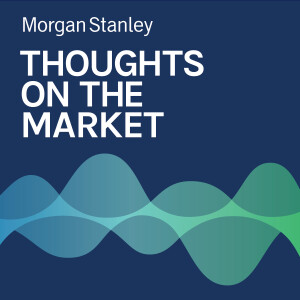
Many investors think the boom in Mexico nearshoring is losing steam. See what they may be missing.
----- Transcript -----
Welcome to Thoughts on the Market. I'm Nik Lippmann, Morgan Stanley Latin American Equity Strategist. Along with my colleagues bringing you a variety of perspectives, today I'll focus on our outlook for nearshoring in Mexico. It's Thursday, January 18th at 10 a.m. in New York.
As we've discussed frequently on this podcast, we're seeing a rapid transition from a globalized economy to one that is more regionalized and Mexico has been a key beneficiary of this trend. Last spring, notably, it surpassed China to become the US largest trading partner. But many market participants believe that the nearshoring narrative in Mexico is losing steam following the strong performance of nearshoring-exposed names in 2022 and 23. We disagree. In our view, nearshoring is not cyclical, it's a multi-year structural narrative that is still gaining strength. We continue to believe that nearshoring and subsequent waves could be a long and sustained investment in ways that could bring about new ecosystems in Mexico's well-established manufacturing hubs in the North and Bajío regions. What's more, we believe the next waves of opportunity to be a more comprehensive impact on GDP growth.
The next wave of opportunity will be investment, which we believe is key for 24. After bottoming out below 20% in 2021 the investment to GDP ratio in Mexico is now above 24%. This increase is driven by increasing capital expenditure for machinery and equipment and foreign direct investment, which is breaking through record levels. In the US, manufacturing construction has risen from about $80 billion annually to $220 billion, and it continues to rise. This is mirrored by nonresidential spending in Mexico, which has grown by a similar magnitude. This is key. The nearshoring process reflects the rewiring of global supply chains, and it's happening simultaneously on both sides of the US-Mexico border.
Therefore, we believe that the surge in investment driven by nearshoring could lift Mexico's potential GDP. We estimate that potential GDP growth in Mexico could rise from 1.9% in 2022 to 2.4% by 2027, a significant surge that would allow the pace of real growth to pick up in '25 to '27 post a US driven slowdown. Indeed, in a scenario where the output gap gradually closes by end of 2027, real GDP growth could hover around 3% by '25-'27.
Evidence of nearshoring is overwhelming. Mexico is rapidly growing its 15% market share among US manufacturing imports, gaining ground from China and other US major trading partners. Moreover, as the supply chains and manufacturing ecosystems that facilitate growing exports expanding simultaneously on both sides of the border, investment efforts are also occurring in tandem. The debate is no longer whether re-shoring or nearshoring are happening, but it's about understanding how quickly new capacity can be activated, as well as how much capital can be deployed, how quickly and where.
The key risk when it comes to nearshoring is electricity. There's no industrial revolution without electricity. We've argued that Mexico needs $30 to $40 billion of additional electricity generation and transmission capacity over the next 5 to 6 years to power its potential. This will require a sense of urgency, legal clarity, and collaboration between Mexico policymakers and their US and Canadian peers, aimed at aligning Mexico's policy objectives with the Paris Climate Accord that will push renewable energy back toward the path of growth.
Thank you for listening. If you enjoy Thoughts on the Market, take a moment to rate us and review us on the Apple Podcast app. It helps more people find the show.
More Episodes
 2024-03-25
2024-03-25
 2024-03-19
2024-03-19
 2024-03-18
2024-03-18
 2024-03-15
2024-03-15
 2024-03-13
2024-03-13
 2024-03-12
2024-03-12
 2024-03-11
2024-03-11
 2024-03-08
2024-03-08
 2024-03-06
2024-03-06
 2024-03-05
2024-03-05
 2024-03-04
2024-03-04
 2024-03-01
2024-03-01
 2024-03-01
2024-03-01
 2024-02-27
2024-02-27
Create your
podcast in
minutes
- Full-featured podcast site
- Unlimited storage and bandwidth
- Comprehensive podcast stats
- Distribute to Apple Podcasts, Spotify, and more
- Make money with your podcast
It is Free
- Privacy Policy
- Cookie Policy
- Terms of Use
- Consent Preferences
- Copyright © 2015-2024 Podbean.com





